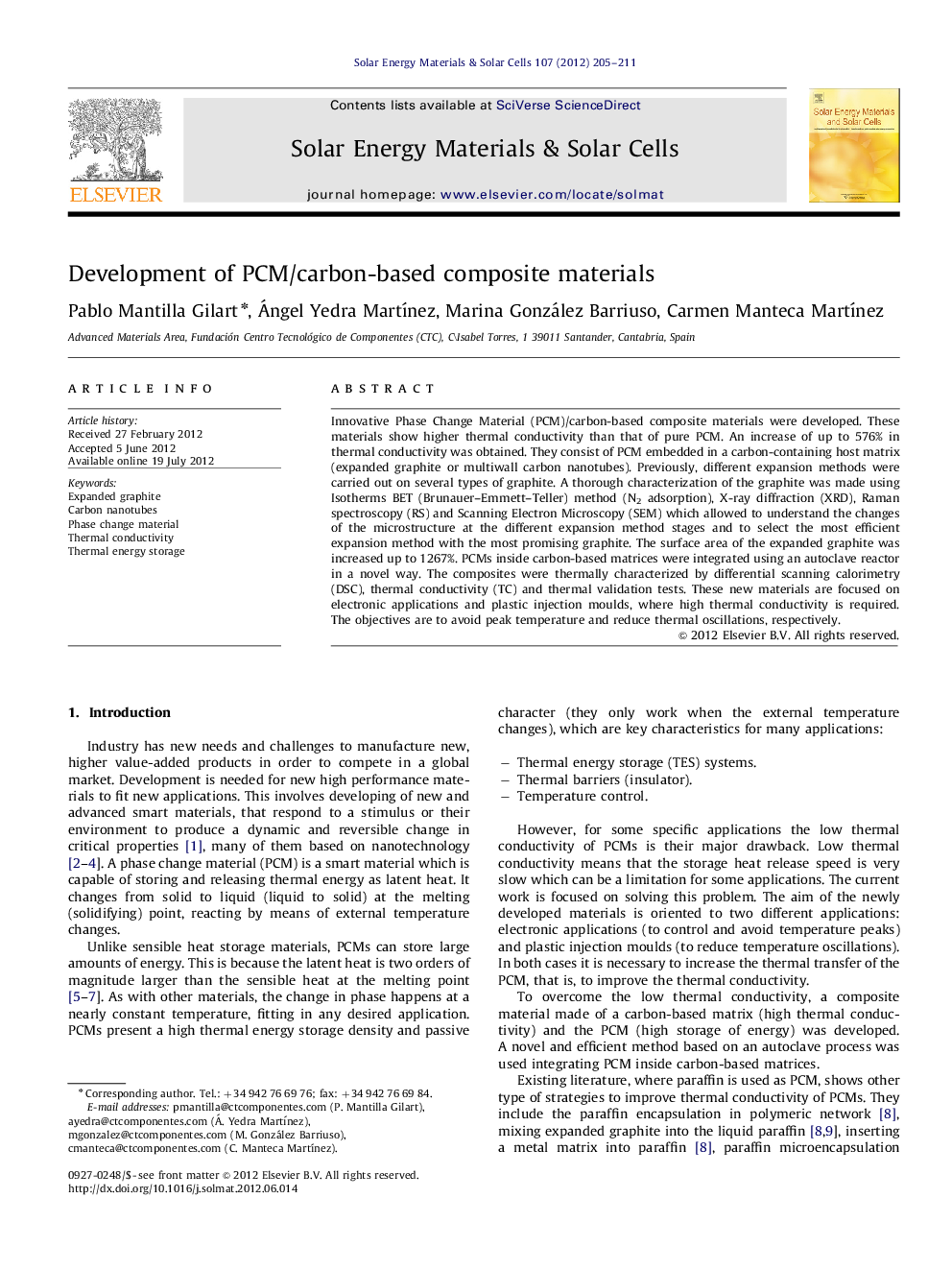| Article ID | Journal | Published Year | Pages | File Type |
|---|---|---|---|---|
| 78909 | Solar Energy Materials and Solar Cells | 2012 | 7 Pages |
Innovative Phase Change Material (PCM)/carbon-based composite materials were developed. These materials show higher thermal conductivity than that of pure PCM. An increase of up to 576% in thermal conductivity was obtained. They consist of PCM embedded in a carbon-containing host matrix (expanded graphite or multiwall carbon nanotubes). Previously, different expansion methods were carried out on several types of graphite. A thorough characterization of the graphite was made using Isotherms BET (Brunauer–Emmett–Teller) method (N2 adsorption), X-ray diffraction (XRD), Raman spectroscopy (RS) and Scanning Electron Microscopy (SEM) which allowed to understand the changes of the microstructure at the different expansion method stages and to select the most efficient expansion method with the most promising graphite. The surface area of the expanded graphite was increased up to 1267%. PCMs inside carbon-based matrices were integrated using an autoclave reactor in a novel way. The composites were thermally characterized by differential scanning calorimetry (DSC), thermal conductivity (TC) and thermal validation tests. These new materials are focused on electronic applications and plastic injection moulds, where high thermal conductivity is required. The objectives are to avoid peak temperature and reduce thermal oscillations, respectively.
► PCM has high latent heat but poor thermal conductivity. ► Carbon-based material has high thermal conductivity. ► Our composite joined their best properties: high thermal conductivity and high latent heat.
